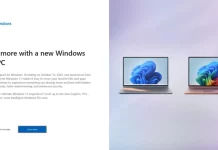
Wall Street is no different than Main Street when it comes to a fascination with trends, and generally what’s in vogue on a day to day basis.
Morgan Stanley mobility analyst Adam Jonas is pretty adept at keeping his finger on the pulse of what’s hot with the investment community — and right now it’s all about SPACs (Special Purpose Acquisition Companies) and EVs (Electric Vehicles).
In a note to clients, Jonas highlights what he’s been hearing from the firm’s investors, namely that many are interested in exposure to “scalable technologies in electric, connected and autonomous vehicle end markets.”
Jonas suggests General Motors (GM) as a top pick in the space for these investors, because of its numerous EV and AV (autonomous vehicle) divisions. He likens these divisions, or arms if you will, as little “incubators” in the GM portfolio. In fact he has name for this portfolio: the ‘GM SPACtopus’:
The arms of the SPACtopus are the Cadillac Brand, Corvette Brand, OnStar Connected Services, China joint ventures, GM Hydrotec (hydrogen fuel cell technology), GM Financial, Ultium EV batteries, and Cruise (GM’s AV division that has investors like Microsoft and Honda).
In the note, Jonas does not fully explain the SPAC part of his metaphor, but one can understand where he’s coming from: If GM spins off any of these divisions, they have discrete value in and of themselves, and perhaps more value as separate companies. Indeed, in breaking down his $80 price target for GM via a sum-of-the-parts analysis, he values the traditional legacy ICE (internal combustion engine) business at $0, and gives its EV business a whopping $57.
Many on Wall Street are bullish on GM’s prospects, especially given the company’s push to go deep into electric with 30 EV models expected to come out by 2025 alone. Yahoo Finance recommendation data shows that as of February, 22 analysts rate GM as either a Strong Buy, Buy, or Hold, with only two analysts rating it an Underperform.
On the downside, Jonas notes concerns like the economic backdrop and execution risk. Part of the execution risk is a nationwide chip shortage that’s affecting GM and rival Ford (F).
Yahoo Finance spoke to GM Chief Engineer Jesse Ortega about those chip shortages. “All industries, including ourselves, are working not only with our tier one suppliers, we’re down to tier two, tier three, tier four, trying to make sure we can protect [vehicle production],” Ortega says.
Luckily for GM, thus far it has been able to protect and maintain production of its highest margin products — pickups and SUVs. “So I think to date, we’ve announced that I think it’s the Trax and the Malibu and probably the Onyx that have been impacted,” Ortega says. “But we’re trying to minimize that – and it is a daily changing situation.”
Assuming GM is able to weather chip shortages in the near term, it seems the big question for Wall Street’s bull case for GM and other EV-focused automakers is one of demand – will consumers actually want to buy EVs in the future, and especially those not made by Tesla (TSLA).
























